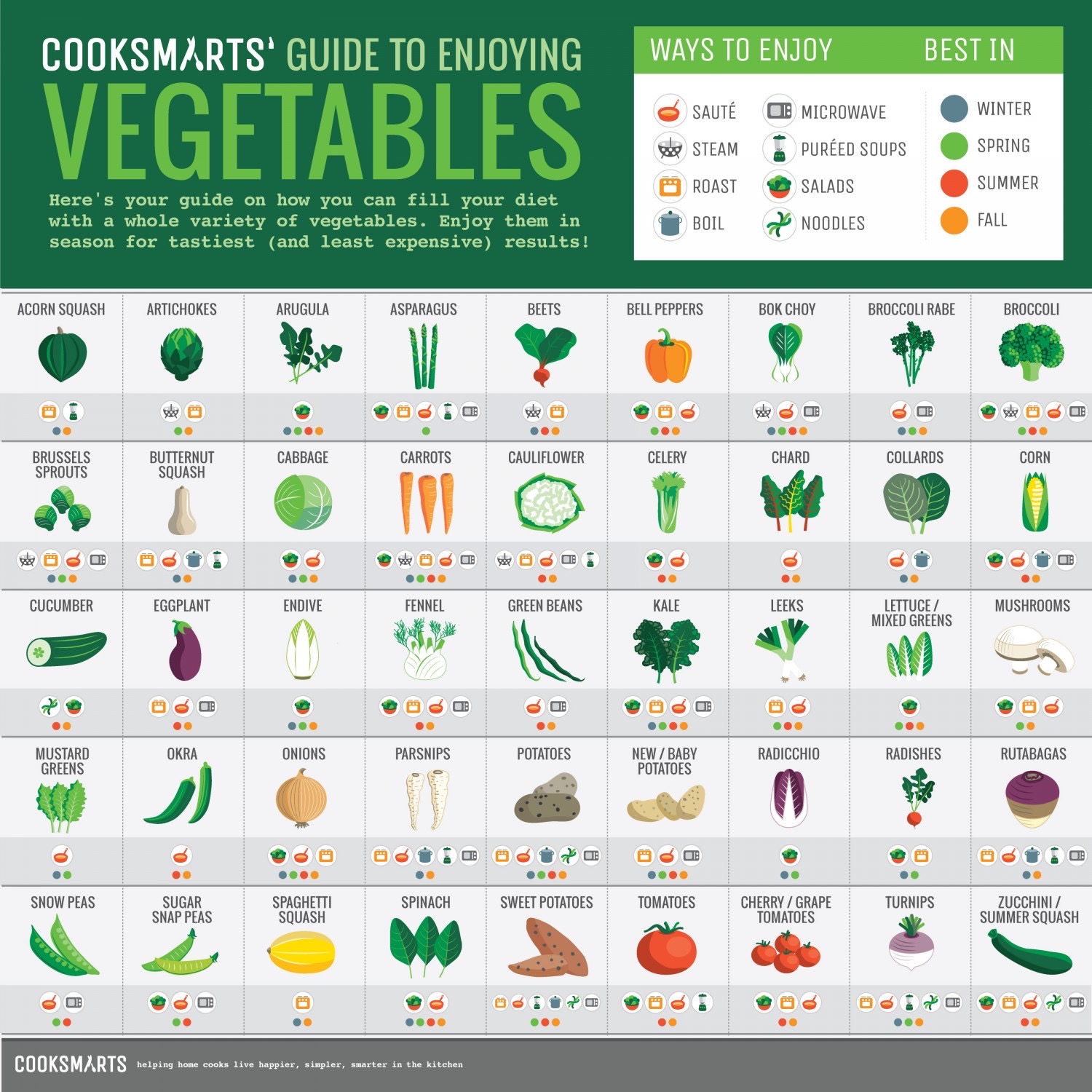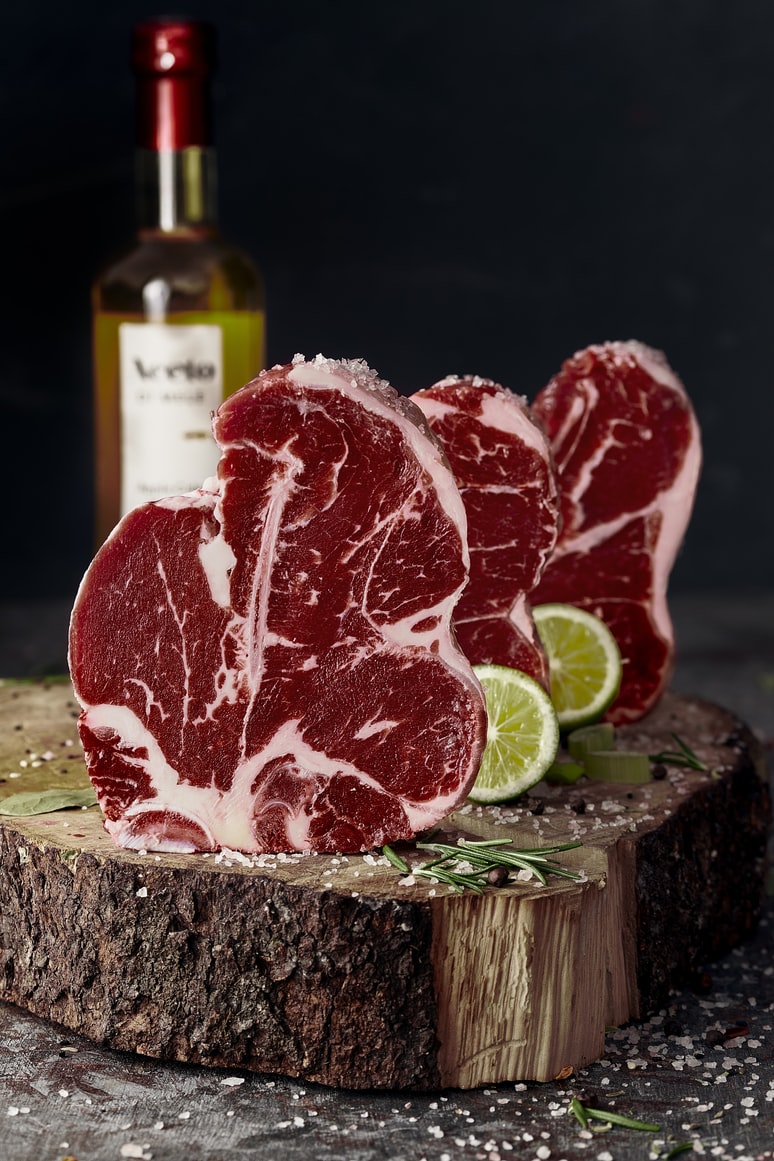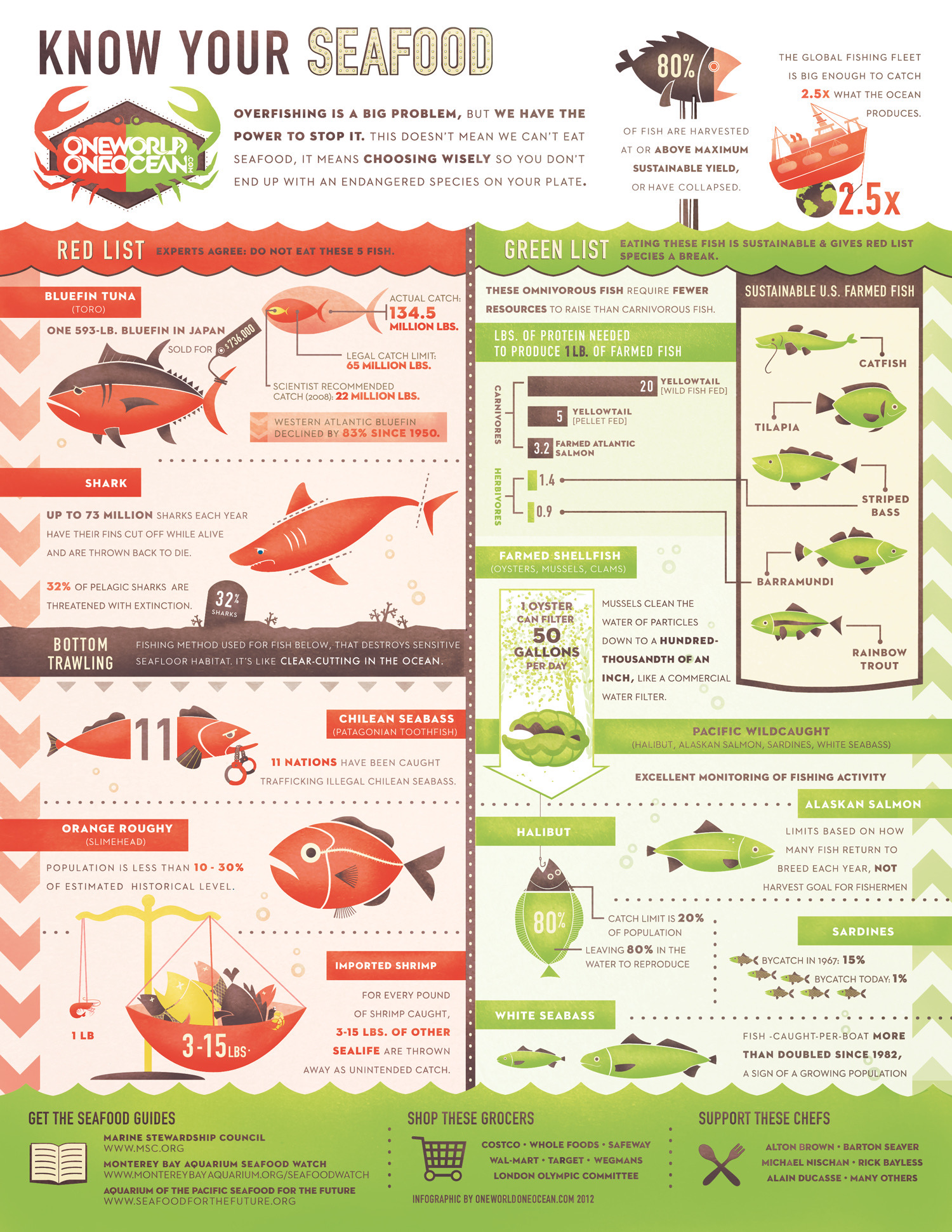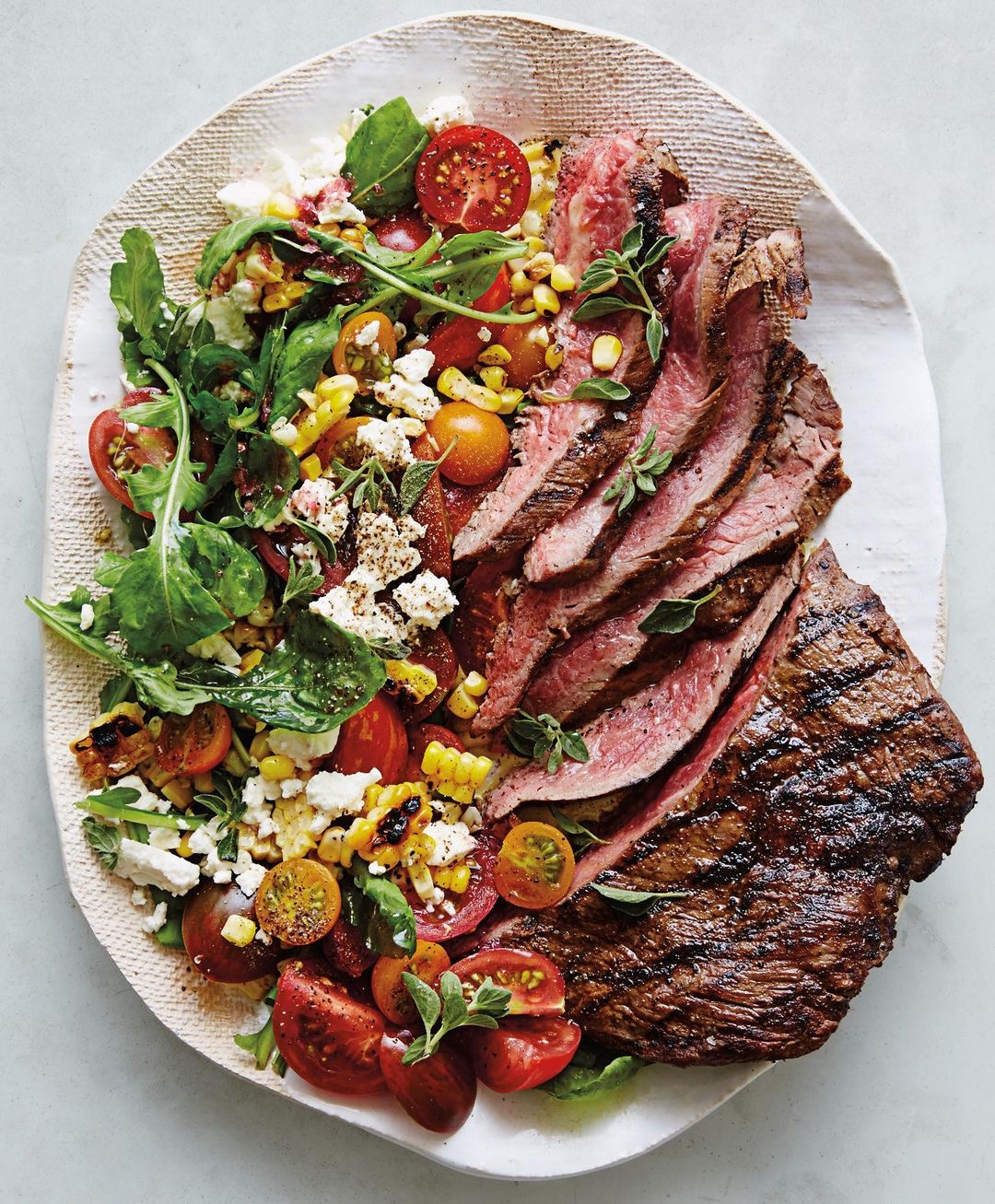Whether you have celiac disease or are simply gluten intolerant, finding naturally gluten-free foods makes it so much easier to plan your meals and snacks without worry. You must avoid wheat, rye and barley, which is easier said than done. Take it from me – I have a gluten-free son and it’s always astounding what items these grains are hidden in. So, knowing some naturally gluten-free foods helps take the guesswork out of shopping and keeps you from having to scrutinize every single ingredients list.
Recent studies show that gluten sensitivity is very common among children and adults alike. And even if you do not have celiac or display symptoms of gluten sensitivity (bloating, discomfort, gas, foul stool), you will still benefit from avoiding gluten in your diet altogether.
And without further ado, let's take a look at the list of naturally gluten-free foods we can all enjoy without the need to check the package:
Quiz Complete!
Get notified about new quizzes like this.
Fruit

Not only is fruit one the several naturally gluten-free foods, but it is also a healthy staple for any diet. Full of vitamins and minerals, fruits contain no gluten and are an easy way to satisfy your hunger without compromising your health. This goes for all fresh and frozen fruit. You will need to be cautious about canned fruit pie fillings and any fruit that comes bathed in any type of sauce. These may contain gluten.
Fruit is an excellent source of dietary fiber, which helps to keep you feeling full and satisfied for longer. Additionally, many fruits are a great source of antioxidants, which can help reduce inflammation and improve your overall health. Eating a variety of fruits can also help to reduce your risk of developing certain diseases, such as heart disease and diabetes. Finally, eating a diet rich in fruits can help to promote healthy skin, hair, and nails.
Vegetables

Just like fruit, vegetables are gluten-free and chock full of nutrition. Eat them raw or cooked any time you like. They taste great in omelets at breakfast, salads at lunch and steamed with garlic for dinner. Just stay away from tempura vegetables and vegetables doused in sauce of any kind. They very likely contain gluten and could make you sick.
Vegetables are a great source of essential vitamins, minerals, and fiber. Eating a variety of vegetables can help you meet your daily nutritional needs. Vegetables are also low in calories and fat, making them a great choice for those looking to maintain a healthy weight.
When it comes to preparing vegetables, it’s important to keep things simple. Steaming, baking, and roasting are all great ways to add flavor without adding unhealthy fats or processed ingredients. Additionally, eating vegetables raw is a great way to get the most out of their nutritional benefits.
When shopping for vegetables, it’s important to look for fresh, organic options. Organic vegetables are grown without the use of pesticides or other chemicals, which helps to keep them gluten-free. Additionally, organic vegetables tend to be richer in flavor and nutrients.
In addition to being naturally gluten-free, vegetables are also a great source of antioxidants. Antioxidants help to reduce inflammation and protect cells from damage, making them an important part of any healthy diet.
Frequently asked questions
Gluten-free means the food does not have gluten. Gluten is a protein found in wheat, barley, and rye that some people can't eat because it makes them feel sick.
Yes, all fruits and vegetables are naturally gluten-free, so you can enjoy them without worry.
Eggs are naturally gluten-free. You can eat them in many different ways, like scrambled, boiled, or as an omelet.
Most dairy products like milk, cheese, and yogurt are naturally gluten-free. Check the labels to make sure there's no added gluten.
Yes, rice is a gluten-free grain, so you can have white, brown, or wild rice without gluten worries.
Potatoes do not contain gluten, so you can eat them baked, mashed, or as fries, just check for added ingredients.
Most fresh meats are naturally gluten-free, but be careful with processed meats or meats with sauces, as these could have gluten.
Yes, corn and corn products like polenta and popcorn are gluten-free.
Nuts and seeds are gluten-free in their natural form, so snack on them without worries, but check for cross-contamination or added ingredients in packaged products.
Oats themselves are gluten-free, but they're often processed with gluten-containing grains, so look for oats labeled gluten-free to be safe.
Dairy

Ah, milk! It’s full of calcium for your bones and teeth and protein for your muscles. And the bonus is that it’s completely gluten-free. That’s great news for your health and your taste buds. Likewise, most kinds of yogurt, sour cream, cream cheese and butter are also gluten-free. Be wary when it comes to ice cream though. Obviously, you can’t have any flavors that contain cookies or cake, but some of the off brands also contain fillers that might not be gluten-free. When in doubt, call the manufacturer and check.
Dairy is a great source of nutrition and can be enjoyed guilt-free by those who are gluten-free. Milk is packed with calcium to keep bones and teeth strong, as well as protein for muscles. Dairy products such as yogurt, sour cream, cream cheese, and butter are all naturally gluten-free. However, when it comes to ice cream, it is important to be aware of what is in the ingredients. Some brands may contain fillers that are not gluten-free, so it is best to check with the manufacturer.
In addition to dairy, other naturally gluten-free foods include fruits, vegetables, legumes, nuts, seeds, and certain grains such as rice, quinoa, and buckwheat. Some of these grains are often used as substitutes for wheat-based products. For example, quinoa can be used in place of pasta or rice in many dishes. Nuts and seeds are great sources of protein and healthy fats, and can be added to salads, smoothies, and desserts.
Meat

No, you don’t have to become a vegetarian just because you’re on a gluten-free diet. Fresh beef, chicken, pork, fish, lamb and turkey are all gluten-free. Grill, bake or roast them for a nutritious meal that won’t make you sick. That being said, it’s imperative to stay away from breaded meats, some processed meats, gravy, some types of seasonings and many marinades. They often contain gluten, though you can find gluten-free versions at many supermarkets like Whole Foods or Sprouts.
Meat is an important part of a balanced diet and can provide essential nutrients, such as protein, iron, zinc, and B vitamins. It is also an important source of omega-3 fatty acids, which are important for heart health. When following a gluten-free diet, it is important to choose fresh, unprocessed meats, such as beef, chicken, pork, fish, lamb, and turkey. These meats are naturally gluten-free and can be grilled, baked, or roasted for a nutritious meal.
When choosing meats, it is important to be aware of which meats contain gluten. Breaded meats, some processed meats, gravy, some types of seasonings, and many marinades often contain gluten, so it is important to read labels carefully. Fortunately, there are many gluten-free versions of these products available at many supermarkets, such as Whole Foods.
In addition to being a great source of protein, meats can also provide essential vitamins and minerals. For example, beef is rich in iron, which is important for maintaining healthy red blood cells. Chicken is a great source of zinc, which is important for a healthy immune system. Fish is an excellent source of omega-3 fatty acids, which are important for heart health.
Fish
Fish is high in many nutrients that most people lack and it's a naturally gluten free product. Wether you choose wild salmon, tilapia or tuna steaks, fish's valuable nutrientsinclude lean protein, iodine, and a variety of vitamins and minerals.
Fatty species are sometimes thought to be the healthiest. This is because fatty fish, such as salmon, trout, sardines, tuna, and mackerel, contain more fat-based nutrients. When possible always opt for wild caught and local.
Fish is an excellent source of omega-3 fatty acids, which are essential for healthy brain and heart function. Omega-3 fatty acids are believed to reduce inflammation, improve cognitive function, and reduce the risk of heart disease. Eating fish regularly may also help lower blood pressure, reduce the risk of stroke, and improve bone health.
Fish is also a great source of protein, providing all of the essential amino acids. It is also a great source of vitamins and minerals, such as vitamin D, B vitamins, and selenium. Eating fish may even help protect against some forms of cancer.
When choosing fish, it is important to select wild-caught fish whenever possible. Wild-caught fish are more likely to be higher in omega-3 fatty acids and other beneficial nutrients. It is also important to choose fish that are low in mercury, such as salmon, tilapia, and sardines.
When preparing fish, it is important to avoid adding unhealthy fats, such as butter, and to opt for healthy fats, such as olive oil. It is also important to avoid overcooking the fish, as this can reduce the nutritional value.
Related Videos about
Seafood

Seafood is not only scrumptious food that's considered to be delicacy in most countries, it's also packed with healthy proteins and it is completely gluten free. Wether it's a plate of oysters or a salad with shrimp, you are sure to get the most valuable nutrients without any danger of consuming gluten.
Seafood is a great source of healthy proteins and is naturally gluten-free, making it a great option for those who have to avoid gluten. It is also an excellent source of essential vitamins and minerals such as zinc, iron, magnesium, and vitamin B12. Additionally, seafood is packed with omega-3 fatty acids, which have been linked to reducing inflammation, reducing blood pressure, and improving heart health.
The most common types of seafood are fish, shellfish, and crustaceans. Fish is a great source of lean protein and is rich in vitamins and minerals. Popular types of fish include salmon, tuna, mackerel, and cod. Shellfish includes items such as oysters, clams, mussels, and shrimp. Crustaceans are typically small and include items such as lobster, crab, and crayfish.
When selecting seafood, it is important to choose items that are fresh and of high quality. It is also important to check for any contaminants or toxins that may be present in the seafood. It is also important to cook seafood properly to ensure that it is safe to eat.
Chocolate
One of the most delicious foods on Earth, thankfully, chocolate is completely gluten free. Always choose dark chocolate over milk chocolate for its heart benefits and sophisticated taste. French, Swiss, German handmade chocolate is the best. When ready to splurge, try the French brand La Maison Du Chocolat - it's the one that high end jewelry stores offer to their clients while those are choosing their future purchase.
Chocolate is a treat that can be enjoyed by those who are gluten-free, as it is naturally gluten-free. It is also one of the most popular foods in the world, and the health benefits of dark chocolate are well-known. Dark chocolate is high in antioxidants, which can help to reduce inflammation and improve heart health. It also contains magnesium, which helps to regulate blood sugar levels.
When choosing chocolate, it is best to opt for high-quality, handmade chocolate from France, Switzerland, or Germany. La Maison Du Chocolat is one of the most well-known brands, and it is often served at high-end jewelry stores.
When it comes to baking, it is important to check the ingredients list to make sure the chocolate is gluten-free. Some brands of chocolate chips, cocoa powder, and baking chocolate are not gluten-free, so it is important to read the labels.
Coffee
Whether decaf or caffeinated, with or without milk or cream - coffee, for most of us, became a meal onto itself. For a healthier option, get a late or a cappuccino with almond milk. It will not spike your sugar and it will make you feel full. Excellent for those, trying to extend the time between meals. Needless to say that this delicious and additive drink is completely gluten free. Yay!
Goat milk products
Now that we mentioned that dairy is completely gluten free, we should also mention that goat milk products are as well a healthy and naturally gluten free product. Much healthier option than the usual cow milk sourced products, goat cheese, goat milk yogurt and goat milk itself will be a wonderful addition to any healthy gluten free diet.
Goat milk is a great alternative to cow milk for those who are looking for a healthier and naturally gluten-free option. It is a great source of calcium, protein, and other essential vitamins and minerals. Additionally, goat milk contains less lactose than cow milk, making it an ideal choice for those with lactose intolerance.
Goat milk is also easier to digest than cow milk, and it has a slightly sweeter flavor. It can be used in baking, as a substitute for cow milk in recipes, and even as a substitute for cow milk in coffee or tea. Goat milk can also be used to make yogurt, cheese, and other dairy products.
Goat milk products are becoming increasingly popular in the United States due to their health benefits and their naturally gluten-free status. Goat milk products are available in most grocery stores and health food stores, and they are often more affordable than cow milk products.
Goat milk is a great way to get the health benefits of dairy without the gluten. It is also a great option for those who are lactose intolerant or have difficulty digesting cow milk. For those looking to add a healthy and naturally gluten-free option to their diet, goat milk products are the perfect choice.
Eggs
While being a part of dairy, we could not stress enough the health benefits of free range organic eggs. Not only they will do wonders for your skin and hair, they are essential proteins, the most perfect protein, in fact, that exists on our planet. The fact that it is so affordable and so easy to find makes it a precious gluten free addition to any healthy lifestyle.
organic eggs are not only versatile and delicious but also brimming with vitamins and nutrients, such as vitamin D, vitamin B12, selenium, and choline, which contribute to brain health and strong muscles. Packed with antioxidants, lutein and zeaxanthin, they help protect your eyes from age-related disorders. The yolk itself, a rich source of biotin, can help in maintaining healthy nails. Enjoy them boiled, scrambled, or poached; they're a wonderful way to enhance your meals with a boost of complete nutrition. Whether in salads or omelets, the humble egg is indeed a culinary hero for the gluten-conscious!
Berries
Whilst most prefer to categorize berries as fruit, we wanted to mention them separately, to make sure you remember about this wonderful gluten free option. With lowest fructose possible, and highest vitamin value, raspberries, blackberries, blueberries as well as strawberries will constitute a great addition to your healthy gluten free breakfast or snack. Always choose organic when possible, and of course, locally sourced and seasonal berries taste the best!
Berries are a great addition to any gluten free diet due to their low fructose content and high vitamin value. Raspberries, blackberries, blueberries, and strawberries are all naturally gluten-free and can be a great addition to a healthy breakfast or snack. When shopping for berries, it is best to opt for organic and locally sourced options when possible, as these will often be fresher and contain higher levels of vitamins and minerals.
Berries are also a great source of antioxidants, which can help protect the body from damage caused by free radicals. They also contain high levels of dietary fiber, which is essential for healthy digestion. Additionally, berries are a great source of vitamin C, which helps to boost the immune system and promote healthy skin.
Berries can be enjoyed in a variety of ways, from simply eating them as a snack, to adding them to smoothies, salads, and other dishes. They can also be frozen and used as a topping for desserts or yogurt.
Quinoa
Quinoa made a splash a decade ago as one of the healthiest foods out there. Thankfully, it's also naturally gluten free. Excellent as a part of main course or mixed in with the salad, it's a filling yet healthy gluten free option you should always keep on your shelf.
Quinoa is a grain-like seed that is native to South America and has been a staple in the Andean diet for centuries. It is a highly nutritious food that is a complete protein, meaning it contains all nine essential amino acids. It is also a good source of fiber, phosphorus, magnesium, and iron. Quinoa is gluten-free, making it a great alternative for those with gluten sensitivities or allergies.
Quinoa is a versatile food that can be enjoyed in a variety of dishes. It can be served as a side dish, added to salads, used as a stuffing for vegetables, or cooked as a breakfast porridge. It can also be used as a substitute for rice or couscous in many dishes. Quinoa flour can also be used in baking to make gluten-free breads, muffins, and other baked goods.
When cooking quinoa, it is important to rinse it before cooking to remove its natural coating, which can give it a bitter taste. Quinoa can be cooked on the stovetop or in the microwave. It takes about 15 minutes to cook on the stovetop and only 5 minutes in the microwave.
Olive Oil
Olive oil as well as olives are too completely naturally gluten free products. They both constitute the basis of Mediterranean diet and recently it was found out that organic olive oil is one of the magic ingredients that can help slow down if not reverse natural aging. Double up on that olive oil dressing in your salad for maximum benefits!
Popcorn
If you are as keen on having popcorn during a movie as we are (always feel free to sneak in a pack of organic Buddha Bowl Himalayan Salt Popcorn pack into your movie theater for a healthier option), you should know that it's one of those naturally gluten free snacks that you can truly enjoy without a second thought. As mentioned before, organic brands are the best options, if you do have to buy popcorn at the movie theater, please do make sure to avoid the so called "butter" that's offered there, since it's the lowest quality, unhealthiest ingredient you can be putting into your body.
Rice
Sure, it’s a grain, but it’s a safe one. Rice is a great alternative for pasta in my house. Loaded with steamed vegetables, ham and an egg, it’s a great fried rice recipe that tastes good and is completely gluten-free. White rice and brown rice are equally great tasting, but the brown variety is less processed and therefore more nutritious.
Rice is a versatile and naturally gluten-free grain that is a great alternative to wheat-based foods. It is a staple in many cultures and can be used in a variety of dishes. White rice and brown rice are both gluten-free, but brown rice is less processed and contains more fiber, vitamins, and minerals than white rice.
Rice can be cooked in a variety of ways, including boiled, steamed, or fried. It can be used as a side dish or as the base of a meal. It is also a great addition to soups and stews. Fried rice is a popular dish that can be made with vegetables, ham, and eggs.
Rice is a great option for those looking for a gluten-free alternative to wheat-based foods. It is also a good source of carbohydrates, which can provide energy and help keep you full. It is also low in fat and calories, making it a great choice for those looking to maintain a healthy weight.
Corn and corn tortillas
Not being able to eat bread is difficult and many of the gluten-free versions don’t taste good or they crumble when you try to spread them with mayo or peanut butter. Corn tortillas make a great alternative. Though they might not work for a peanut butter and jelly sandwich, they work well with mayo, turkey, cheese and lettuce for a yummy wrap that’s safe to eat. Taco shells and chips are also perfect for your gluten-free diet and let you make yummy dinners anytime you want.
What’s your favorite gluten-free food? If you check, you might be able to find gluten-free versions of things otherwise off-limits. For example, you can now buy gluten-free soy sauce. Oriental food, here we come!
Corn is a great alternative to wheat-based products for those following a gluten-free diet. It is naturally gluten-free and can be used to make a variety of dishes, such as corn tortillas. Corn tortillas are a great substitute for bread as they don’t crumble when spread with mayonnaise or peanut butter. They also make great wraps when filled with turkey, cheese and lettuce. Additionally, taco shells and chips are perfect for a gluten-free diet and make for a delicious dinner.
If you’re looking for other gluten-free options, you may be surprised to find that many products you thought were off-limits can actually be found in gluten-free versions. For example, there are now gluten-free soy sauces available on the market. This means that those following a gluten-free diet can still enjoy oriental food without having to worry about gluten.
Legumes - beans, lentils, peas
Legumes are a wonderful source of protein, especially for vegans and vegetarians. Completely gluten-free, beans, lentils, peas, chickpeas can make a healthy basis for any meal. An abundance of recipes are available online for a multitude of dishes, especially Latin American cuisines.
Legumes are a great source of plant-based protein, making them an ideal choice for vegans and vegetarians looking for an alternative to animal-based proteins. They are also completely gluten-free, making them a great option for those with gluten sensitivities or allergies. Beans, lentils, peas, and chickpeas are all part of the legume family and can be used to create a variety of delicious meals.
Legumes are incredibly versatile and can be used in a number of dishes. From soups and stews to salads and side dishes, legumes can be used in a variety of recipes. Latin American cuisines especially rely heavily on legumes, with dishes like black beans and rice, refried beans, and chili all featuring legumes as the main ingredient.
Legumes are also a great source of other essential vitamins and minerals. They are high in fiber, which can help to keep you feeling fuller for longer and can aid in digestion. They are also a good source of vitamins and minerals like iron, magnesium, and zinc, which are important for maintaining healthy bones and boosting your immune system.
Mushrooms
Mushrooms are such an excellent and often overlooked type of naturally gluten-free produce! From portobello to porcini, they make an excellent addition to any meal and take the taste of the dish to another level. From adding sautéed mushrooms to your rice to making a mushroom soup, you'll find the taste exquisite and absolutely divine!
Now that you have the list of natural gluten-free foods, you are ready to shop for your groceries without the need to check the every single package for information about gluten. Enjoy your healthy meals and stay away from gluten to feel your best!



Feedback Junction
Where Thoughts and Opinions Converge